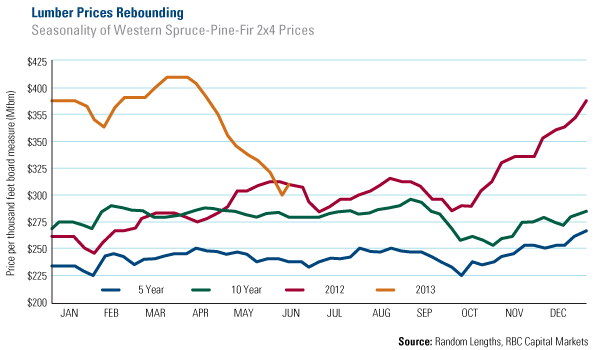Energy and Natural Resources Market Radar (June 17, 2013)
Strengths
- U.S. oil production grew at the fastest pace since BP started keeping records in 1965, because of unconventional sources such as shale and tight oil. An increase in output of about 1 million barrels a day caused net oil imports to the U.S. to drop by 930,000 barrels a day and imports are now 36 percent below their 2005 peak, BP said in its annual Statistical Review of World Energy this week. The expansion of both oil and natural gas production in the U.S. was the fastest in the world last year. The report highlights the potential scale of unconventional oil extraction.
- China's power consumption in May reached 426.9 billion kilowatt-hours (kWh), 5 percent higher than in the same period of 2012, the National Energy Administration (NEA) said on Friday. Total power consumption over the first five months reached 2.057 trillion kWh, up 4.9 percent compared with the same period a year earlier. Power consumption in China, the world's top energy user, is expected to grow more than 9 percent this year, faster than the 5.5-percent growth rate of 2012, the State Electricity Regulatory Commission (SERC) said in January.
Weaknesses
- The Energy Information Administration (EIA) lowered its forecast for U.S. gasoline demand for 2013 to the lowest level in 12 years. Gasoline consumption this year will average 8.66 million barrels a day, lower than the 8.68 million in last month’s projection and the lowest level since 2001, according to the agency’s monthly Short-Term Energy Outlook.
- Nymex natural gas futures fell 2.5 percent this week to settle at $3.74 per mmbtu as injections into storage were in line with estimates.
Opportunities
- Malaysian national oil company Petronas, says it expects to spend up to $16 billion to build a liquefied natural gas export facility in western Canada. Arif Mahmood, Petronas’ vice president of corporate planning, says the company will invest between $9 billion and $11 billion to construct two LNG liquefaction plants. Another $5 billion will be invested in a 750 kilometer-long pipeline, to be built by TransCanada Corp., to supply gas to the two plants, he said Tuesday in an email to The Associated Press. The Pacific Northwest LNG project, located on Lelu Island in the Port Edward district, will liquefy and export natural gas produced by Progress Energy Canada. Both companies are owned by Petronas, which secured its first LNG buyer, Japan Petroleum Exploration Co.
- Statoil predicts oil demand is expected to rise 0.5 percent per year to around 100 million barrels of oil per day by 2040, per a research report released by the Norwegian oil company. Statoil said that income growth and an increase in private transport in emerging economies were the most important factors contributing to higher oil demand growth. "Economic development will continue to drive energy demand, and energy is a prerequisite for economic growth," Statoil chief economist Eirik Wærness commented. The report predicted that annual global economic growth would continue on its current pattern of growth, with yearly growth averaging 2.8 percent over the next three decades. Emerging economies are expected to see 4.5 percent average annual growth with Organization for Economic Cooperation and Development (OECD) countries trailing at 1.9 percent. This economic growth will translate into global primary energy demand growth averaging 1.3 percent a year, or a total increase of 40 percent over the 27-year period, the in-house analysis said. Non-OECD countries are expected to account for the bulk of the energy demand rise, seeing demand growth of more than 60 percent by 2040.
Threats
- Changes to South Africa’s mining laws are likely to raise regulatory costs after amendments came into force last week, law firm Webber Wentzel said. The Mineral and Petroleum Resources Development Amendment Act (MPRDA) became effective June 7 after being signed into law by President Jacob Zuma. “The Amendment Act introduced a number of significant amendments to South Africa’s mineral regulatory regime,” the law firm said. “This is likely to impose further compliance and regulatory costs on the industry.” The changes stipulate that the mine’s minister must refuse an application for prospecting rights should those rights concentrate resources under the control one company, restricting “equitable access,” according to the law firm, which said the vague phrasing leaves the rule open to interpretation. The changes also allow the minister to impose stricter conditions on mining rights where the land is occupied, which may go beyond the requirements of the Mining Charter. The alterations, originally proposed in 2008, may be superseded by the Amendment Bill 2013, after it’s introduced to parliament later in June, Webber Wentzel said.













